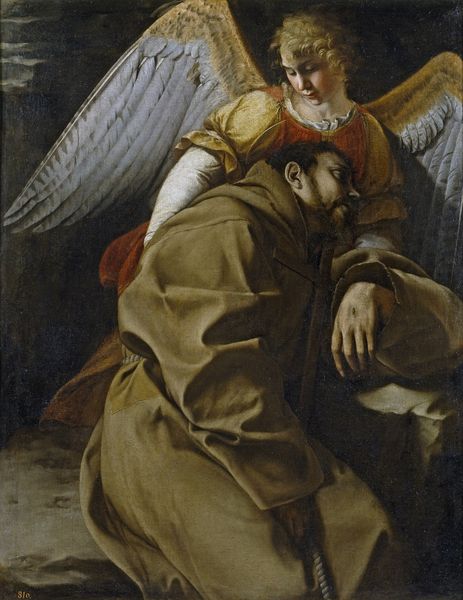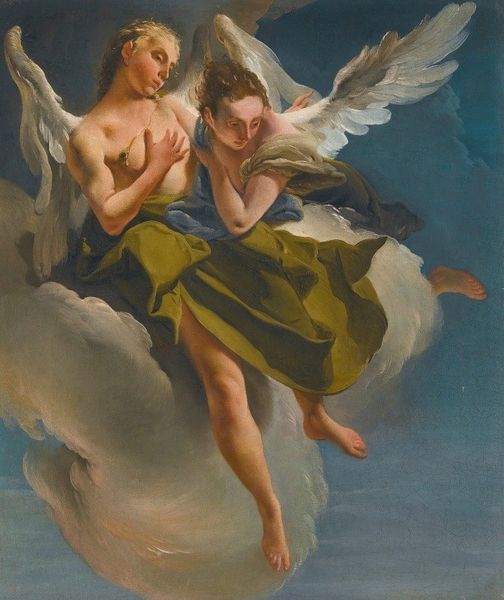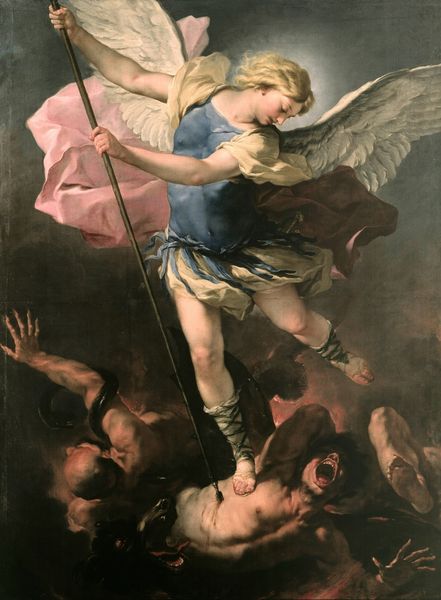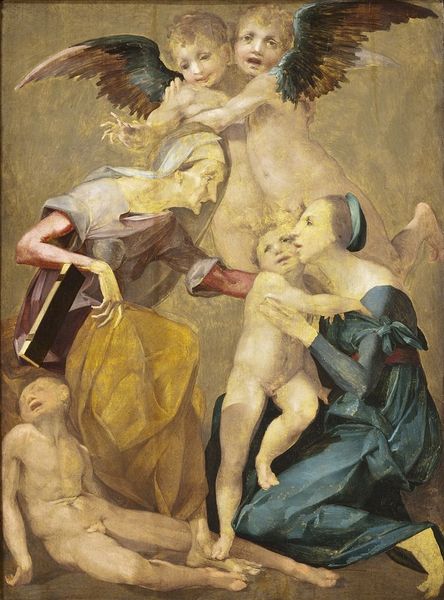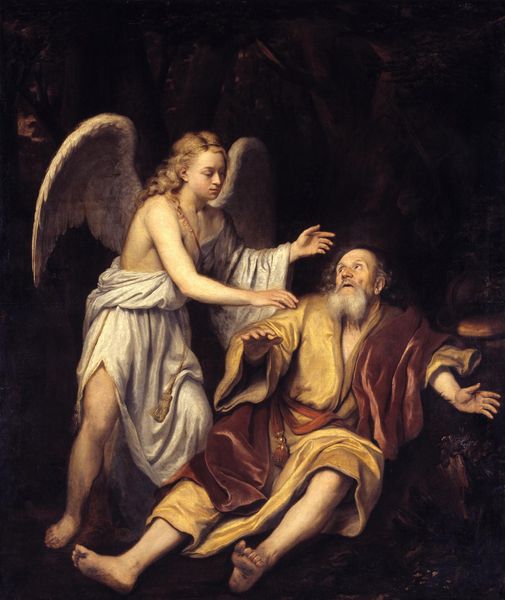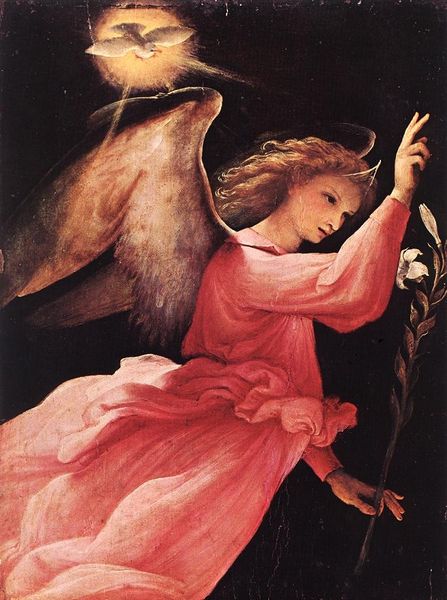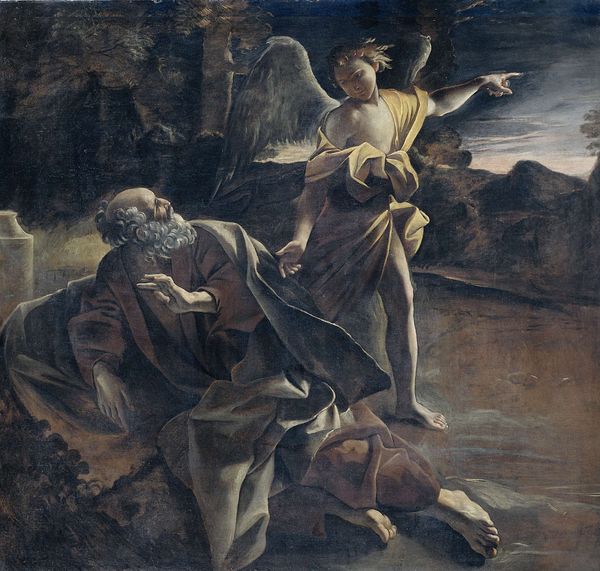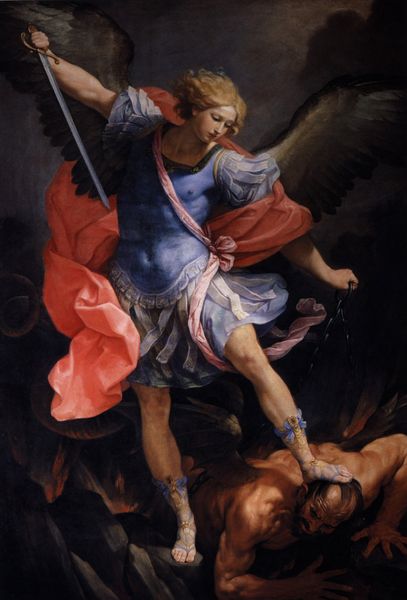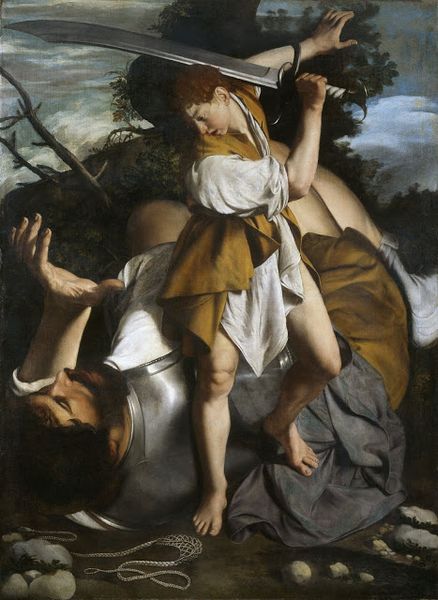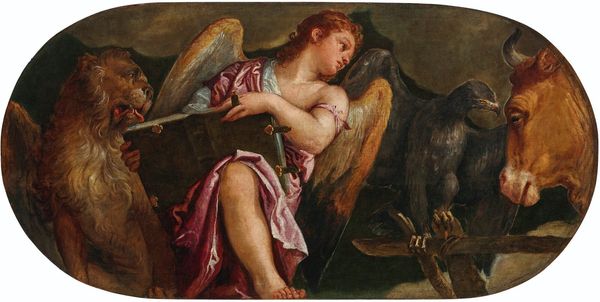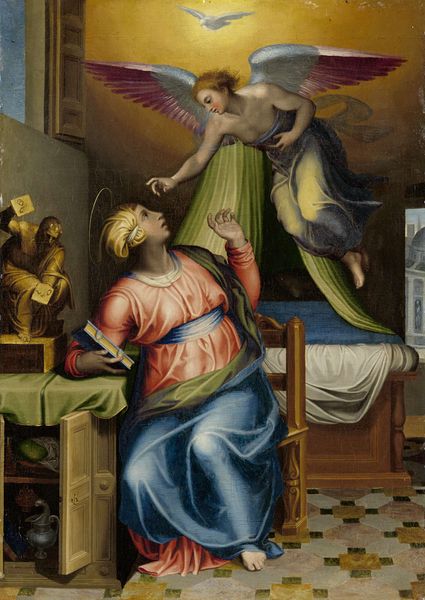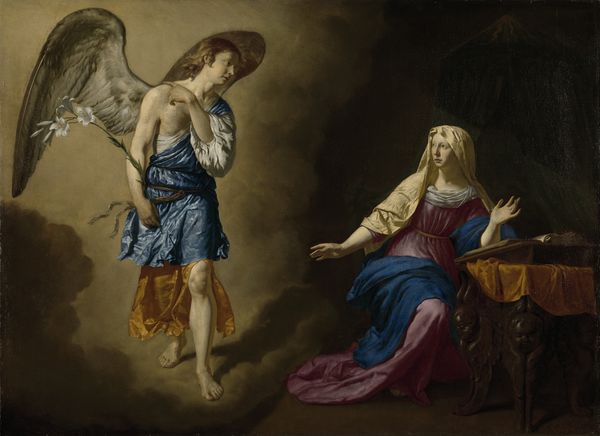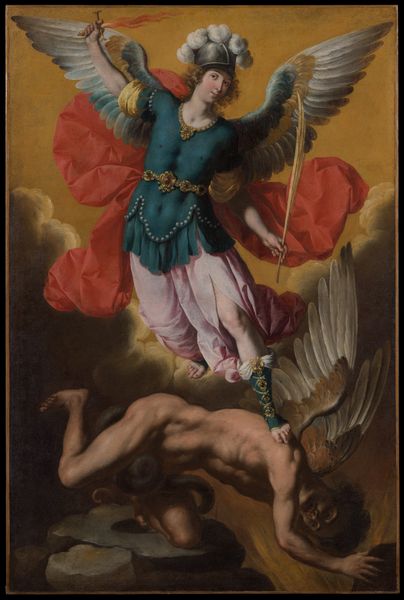
painting, oil-paint
#
portrait
#
baroque
#
painting
#
oil-paint
#
figuration
#
history-painting
#
italian-renaissance
Copyright: Public domain
Editor: Here we have Orazio Gentileschi’s oil on canvas, "St Francis supported by an Angel," created around 1600. The subdued color palette gives it such a somber feel. What strikes you most when you look at this piece? Curator: Isn't it striking how Gentileschi captures such raw vulnerability? For me, the tenderness is palpable; look at the angel's delicate touch contrasted with St. Francis’s almost limp form. There's a beautiful, unspoken dialogue happening. Do you feel it? Editor: Absolutely. It’s almost as if the angel is not just supporting him physically but emotionally as well. The dramatic lighting certainly emphasizes that contrast, adding to the Baroque drama, right? Curator: Exactly! Gentileschi uses light and shadow so cleverly, almost like a stage spotlight, guiding our eye. And beyond the immediate drama, think about the historical context. It's early Baroque, Rome is wrestling with religious reform, and here we have a saint, typically portrayed as powerful, shown in a moment of profound human weakness. It's surprisingly intimate, isn't it? Editor: Definitely makes you rethink the traditional, heroic depictions. So, the artist is humanizing St. Francis, perhaps inviting the viewer to connect with him on a more personal level? Curator: Precisely. He strips away the untouchable saintliness and reveals the fragile humanity. And I wonder if that was intended to be a comment on the Church itself? That it too should be vulnerable, perhaps more compassionate? Or am I reading too much into it? Editor: No, that makes complete sense! Seeing this has certainly given me a fresh perspective on Baroque art and how it engages with its subjects. It’s far more nuanced than I initially thought. Curator: Agreed! And isn't that the beauty of art? Always offering us new ways to see, feel, and think?
Comments
No comments
Be the first to comment and join the conversation on the ultimate creative platform.
